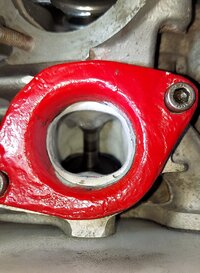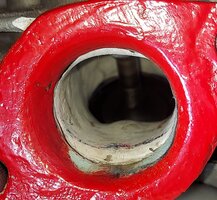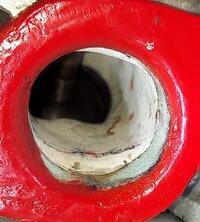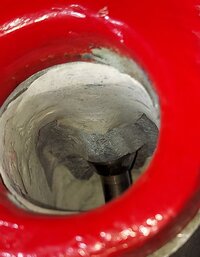Gary I will flow test anyone's head that desires it.
The testing takes a bit of time, but not that long.
The compililation of data likewise.
I can do the full battery or choose which tests you want,
Obviously I can video whatever sections are desired.
The full battery:
CFMs (,05 increments)
Velocity Port Maps (@.20 & .40)
Valve DP (Dispersion around the valve)
Smoke testing (Video visual flow @ .1 increments)
Swirl testing (Video @ .1 increments)
Flowball Testing (Video port activity)
Addtionally I can physically map the port, including runner length and volume.
The report would include all relevant information regarding CSA, Coefficient of Discharge (efficiency), etc.
Since you stepped up and provided me with the junk head which has been a HUGE benefit to my testing;
I will gladly provide all the above or whatever parts are of interest to you for free.
That is no porting. Just the testing. Just a way of me being able to say thanks for helping me out with this endeaver.
Just send me a message when you get ready.
Should anyone else be interested, they can message me and I am sure we can work something out.
I am not trying make bank here, my bills are paid and I am retired.
Stock heads, performance heads, porting work..
Not everyone wants all the bells and whistles, but something we all want is a head that works well.
Check guides, valves, modified (Lilli) guides.
Just be sure you don't send me a cracked head. Unless it is an obvious crack I won't see it.
I have no way of testing for cracks in alum at the moment. Don't want the work to be wasted.
I do have some testing of basic mods (pocket porting) for stock heads coming in a seperate thread soon.
The testing takes a bit of time, but not that long.
The compililation of data likewise.
I can do the full battery or choose which tests you want,
Obviously I can video whatever sections are desired.
The full battery:
CFMs (,05 increments)
Velocity Port Maps (@.20 & .40)
Valve DP (Dispersion around the valve)
Smoke testing (Video visual flow @ .1 increments)
Swirl testing (Video @ .1 increments)
Flowball Testing (Video port activity)
Addtionally I can physically map the port, including runner length and volume.
The report would include all relevant information regarding CSA, Coefficient of Discharge (efficiency), etc.
Since you stepped up and provided me with the junk head which has been a HUGE benefit to my testing;
I will gladly provide all the above or whatever parts are of interest to you for free.
That is no porting. Just the testing. Just a way of me being able to say thanks for helping me out with this endeaver.
Just send me a message when you get ready.
Should anyone else be interested, they can message me and I am sure we can work something out.
I am not trying make bank here, my bills are paid and I am retired.
Stock heads, performance heads, porting work..
Not everyone wants all the bells and whistles, but something we all want is a head that works well.
Check guides, valves, modified (Lilli) guides.
Just be sure you don't send me a cracked head. Unless it is an obvious crack I won't see it.
I have no way of testing for cracks in alum at the moment. Don't want the work to be wasted.
I do have some testing of basic mods (pocket porting) for stock heads coming in a seperate thread soon.

 )
)


